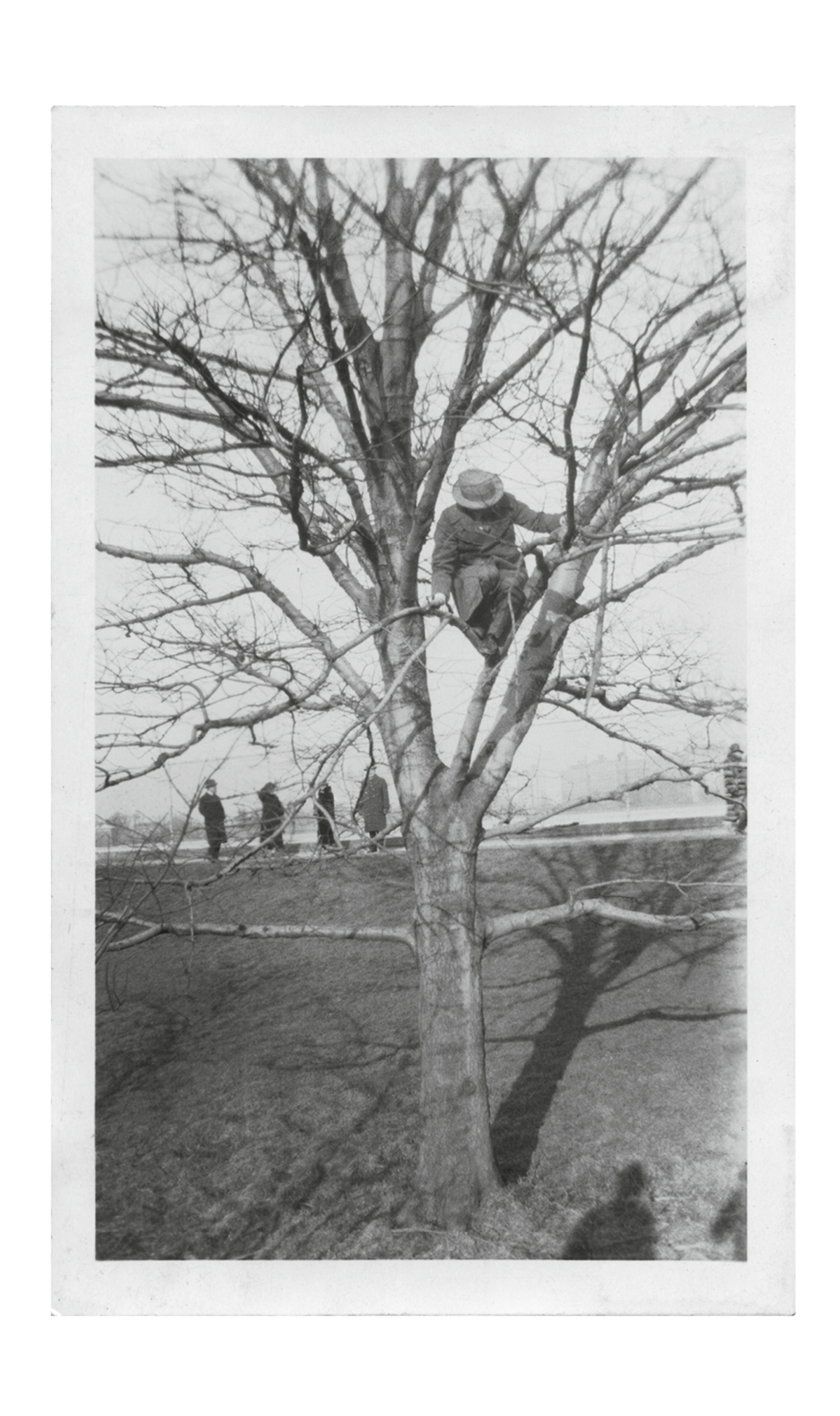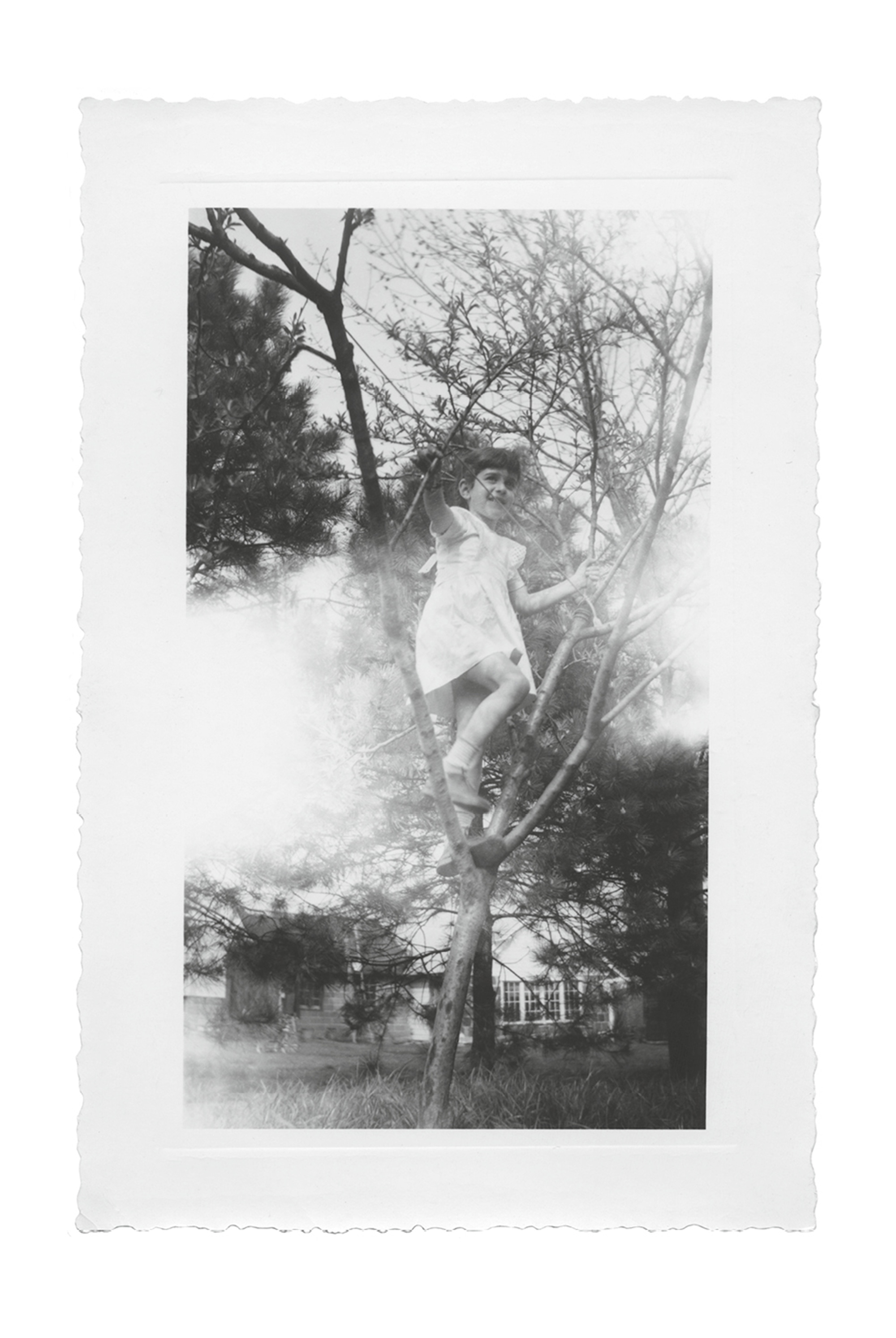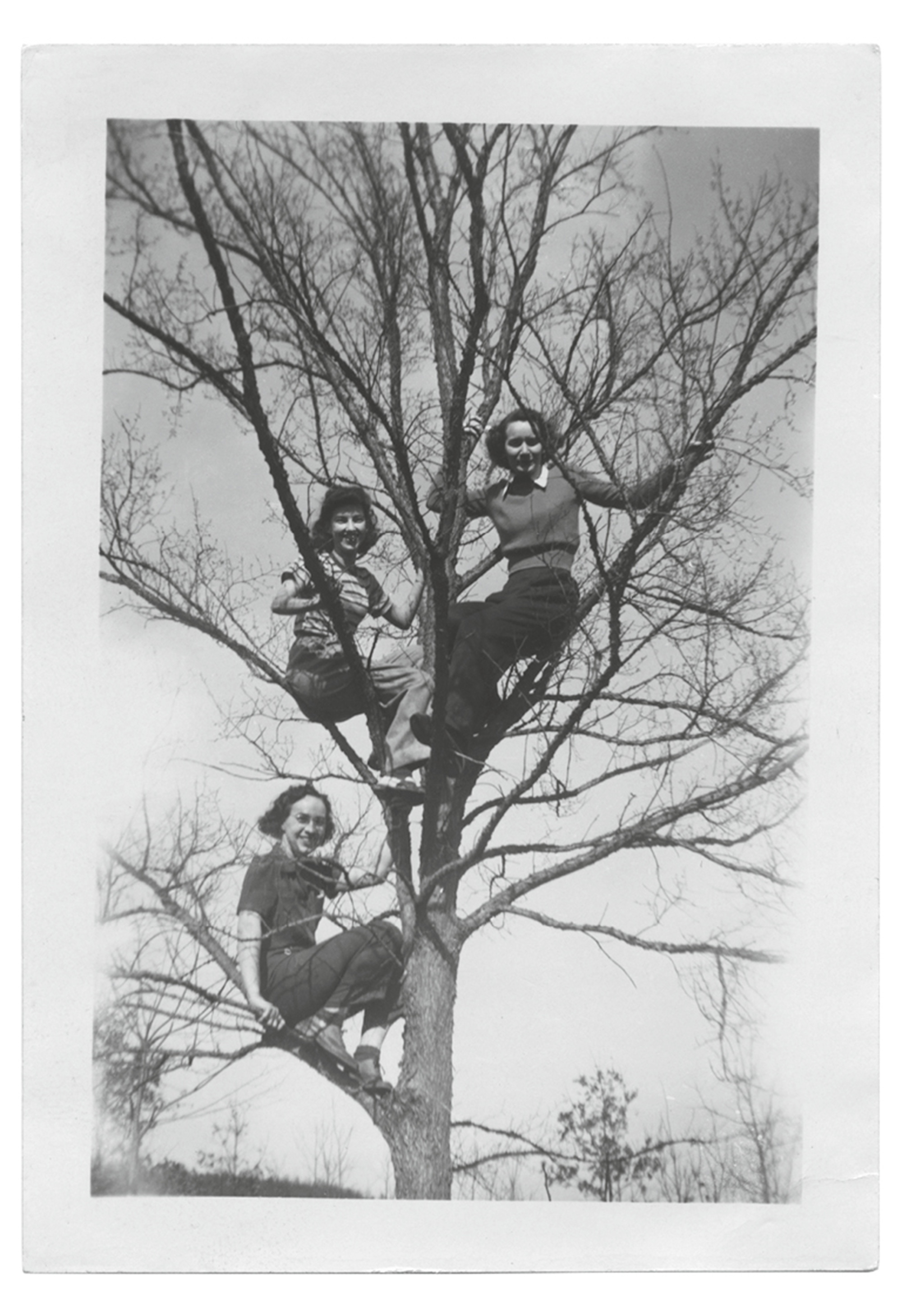Up a Tree
A bunch of nuts
Joel Smith
From the moment point-and-shoot cameras were first mass-marketed late in the nineteenth century, and for roughly the period of a human lifetime thereafter, amateur photographers (especially, it appears, in the United States) commonly posed their friends and families in trees: perched in canopies, clinging to trunks, swinging from branches. Why?


Passive explanation
Correctly exposing the film in a snapshot camera required bright outdoor light. Portrait photography occurred outdoors. Trees were readily available props.
Active explanation
Climbing into the tree answered the demand for a visual gag on short notice. No preparation was required for this gag; in fact, the less appropriately the subject was dressed, the better. (Hypothesis 1: digital cameras and view screens killed the tree-climb gag. What might be funny? You, up in that tree, as you’ll look when I get these prints back from the drug store. What is not so funny? As it turns out, you in that tree right now.)


Iconographic explanation
Snapshots are for uplift, and branches against the sky are the shape of life and of proliferating hopes. Inferior alternatives (which, nonetheless, got put to use): woodpile, haystack, telegraph pole, local promontory.
Procedural explanation
As a genre, snapshots disproportionately document their era’s version of playtime. Any time someone in a group of picnickers climbed a tree, no camera owner present could fail to recognize a photo op. This dynamic is really better expressed in reverse, thus: the presence of a camera prompts shenanigans. (Hypothesis 2: more adults climbed trees in the century of the snapshot than had climbed trees in the preceding millennium.) The shenanigan-mémoire rendition of history favors the camera-conscious, assertive, tree-climbing child.

Semiotic explanation
Snapshots are working images; like cartoon drawings, they verge on the status of language. Some of the most common snapshot scenarios arose to work in conjunction with stock captions and catchphrases. Glued into an album, a group of tree dwellers became “a bunch of nuts” or “bananas.” Boy Y and Girl X, sittin’ in a tree, promised imminent k-i-s-s-i-n-g. Since Daniel Boone’s day, the American phrase “up a tree” had meant “in a predicament,” but in the 1930s it sprouted a faddish meaning—“drunk”—whose breath can still be whiffed. H. L. Mencken lists a few choice synonyms (canned, ossified, stewed) in support of linguist George Philip Krapp’s principle: British common speech favors “queer-sounding words, like bally and swank,” whereas American slang conjures “vivid images and pictures.” All the more attractive an option, then, for the makers of these modern hieroglyphics: to squeeze punch lines from daily life at the touch of a button.
Joel Smith is the Richard L. Menschel Curator of Photography at the Morgan Library & Museum. His books include Saul Steinberg: Illuminations (Yale University Press, 2006) and The Life and Death of Buildings: On Photography and Time (Yale University Press, 2011).
Spotted an error? Email us at corrections at cabinetmagazine dot org.
If you’ve enjoyed the free articles that we offer on our site, please consider subscribing to our nonprofit magazine. You get twelve online issues and unlimited access to all our archives.